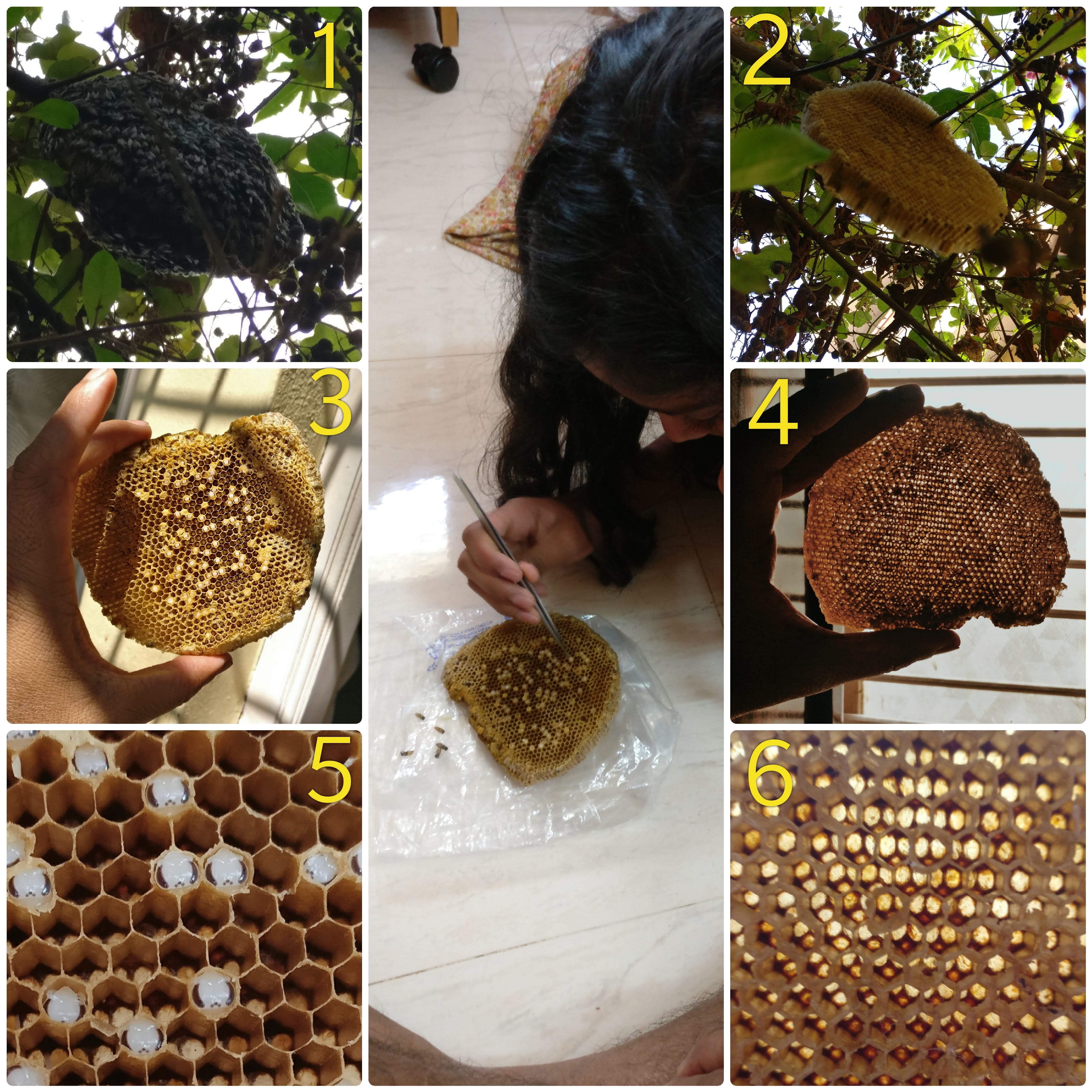
red dwarfs story in pictures
There has never been a grand plan or design for our garden. Our little wild garden, shaped by all its inhabitants including us, has emerged organically over the years. Even while I am sure that this garden wouldn’t have been what it is without our participation, our approach has been that of minimal, gradual changes called for by our needs, and in response to the garden itself. Being what it is, our garden has some mysteries in stock, that it often reveals.
It was while trying to harvest Ivy gourds from a vine that had climbed up a henna tree, that we found a hive of the red dwarf honey bee. Delighted as we were about Ivy gourds, we were more delighted that the red dwarfs had made our henna tree their home.
The red dwarfs have been regular visitors to our garden along with other social & solitary bee species such as Indian honey bee, giant honey bee, dammer bee, blue banded bee & carpenter bee.
Soon after noticing the hive in the tree, we stopped harvesting ivy gourds, lest we should disturb them. However our delight was short lived. The next day, we saw the bees were leaving the hive. They felt unsafe & we felt sad. It was a lesson for us to be more watchful and gentle, a lesson to be better members in the community of life.
We were sad about their departure but, we were curious & saw this as an opportunity to closely examine the hive, note down our observations & learn a little more about these bees.
First we waited a day to ensure we were not disturbing the bees in their shifting operations. The next day morning, seeing that there were no bees visiting the hive, we took the liberty to handle the hive.
First observations
- The hive had no honey & no bees were visiting the hive.
- The hive was full of busy little (most likely) ghost ants. Couldn’t discern immediately what their business was.
Carefully removing the hive from the branch, we studied it further, checking the cells & picking all the cells that had something in them.
Further observations
- The hive was small and it filled the palm of my hand covering all my fingers (10cm x 11cm x 1.5cm).
- There were no capped cells and we din’t notice any eggs or larvae in the hive.
- We could find pupae, of different sizes.
- Pupae in the central cells were small.
- Pupae in the cells around the edge of the hive were more mature. Some were ready to fly.
- We thought that the ants were after the pupae, noticing how hastily they surrounded & carried the pupae away as we picked them from the cells.
- The cells of the layers were built in such a way that the walls of one layer crisscrossed the walls of the layer behind.
Overall, we learned how sensitive the red dwarfs were to disturbance around their hive and the costs they incurred in shifting their colony; The hive & the pupae that they had to leave behind, honey that was needed to make wax for a new hive & the effort involved. We also got an inkling of the waste-less, cyclical economy of nature, looking at how the abandoned hive was turning into a bonanza for the ghost ants & quickly getting integrated into their life cycle.